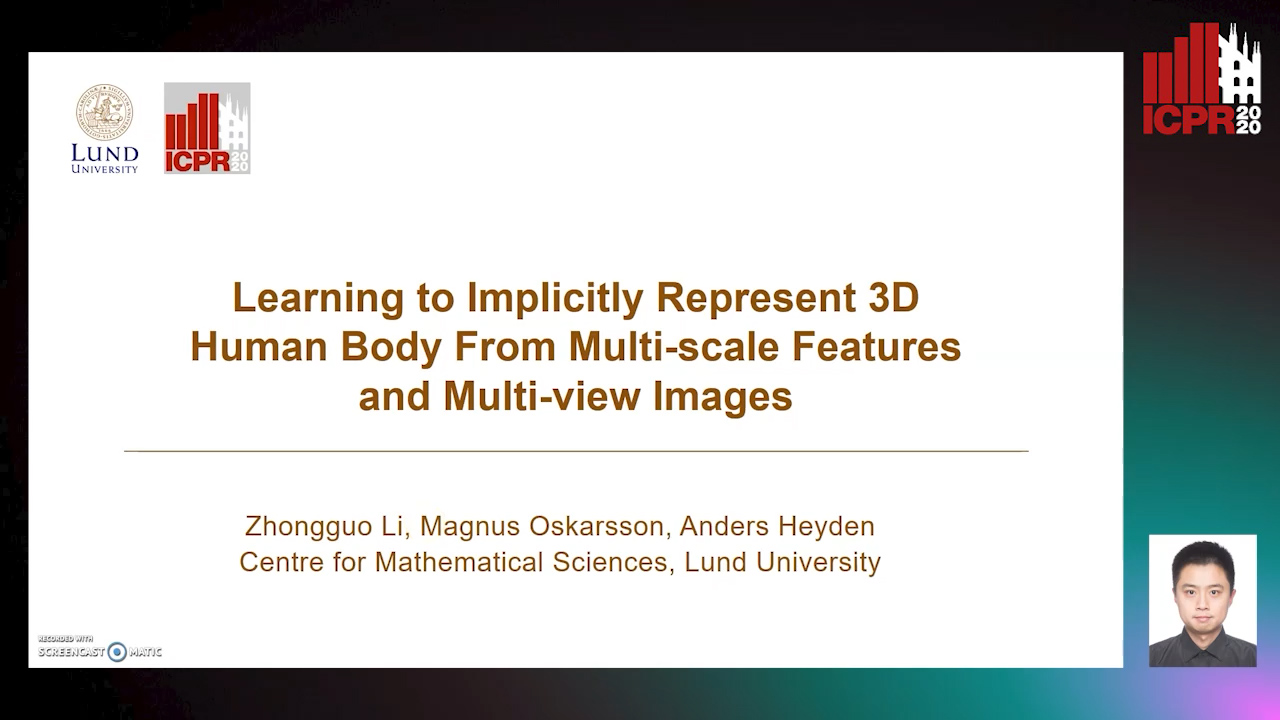Zhongguo Li
Paper download is intended for registered attendees only, and is
subjected to the IEEE Copyright Policy. Any other use is strongly forbidden.
Papers from this author
Learning to Implicitly Represent 3D Human Body from Multi-Scale Features and Multi-View Images
Zhongguo Li, Magnus Oskarsson, Anders Heyden

Auto-TLDR; Reconstruction of 3D human bodies from multi-view images using multi-stage end-to-end neural networks
Abstract Slides Poster Similar
Reconstruction of 3D human bodies, from images, faces many challenges, due to it generally being an ill-posed problem. In this paper we present a method to reconstruct 3D human bodies from multi-view images, through learning an implicit function to represent 3D shape, based on multi-scale features extracted by multi-stage end-to-end neural networks. Our model consists of several end-to-end hourglass networks for extracting multi-scale features from multi-view images, and a fully connected network for implicit function classification from these features. Given a 3D point, it is projected to multi-view images and these images are fed into our model to extract multi-scale features. The scales of features extracted by the hourglass networks decrease with the depth of our model, which represents the information from local to global scale. Then, the multi-scale features as well as the depth of the 3D point are combined to a new feature vector and the fully connected network classifies the feature vector, in order to predict if the point lies inside or outside of the 3D mesh. The advantage of our method is that we use both local and global features in the fully connected network and represent the 3D mesh by an implicit function, which is more memory-efficient. Experiments on public datasets demonstrate that our method surpasses previous approaches in terms of the accuracy of 3D reconstruction of human bodies from images.